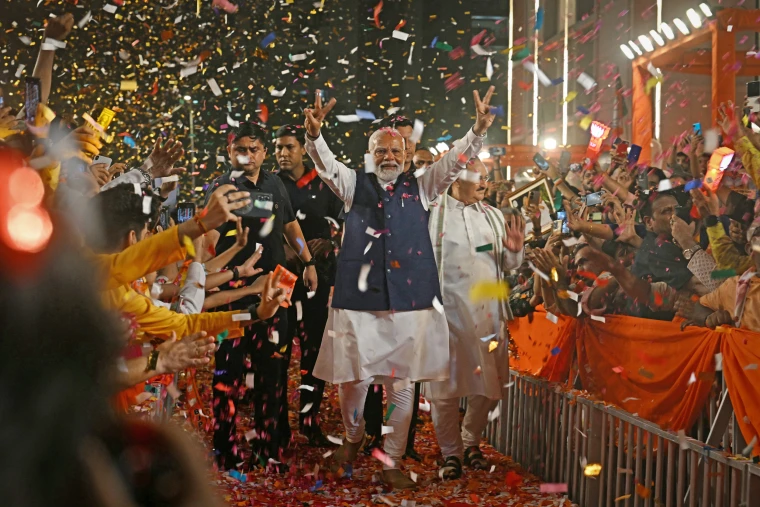The opposition obituaries had been written. According to most polls, India’s election was a foregone conclusion.
Prime Minister Narendra Modi’s right-wing, Hindu-nationalist alliance was expected to secure a supermajority – and with it the power to enact radical change unopposed.
To Modi’s critics and opponents, India was on the fast track to becoming a de-facto one-party state.
But as Trump’s victory of 2016, Brexit and countless other upsets of recent years have shown, opinion polls and analysts can often get it spectacularly wrong.
Going into this election, Modi had set a goal of winning 400 seats in the lower house of parliament, or Lok Sabha. But as results began to trickle in Tuesday night, it quickly became clear his ruling Bharatiya Janata Party wouldn’t even have enough to form a simple majority.
Instead, for the first time since coming to power a decade ago, Modi will be reliant on longstanding local coalition partners to keep him in government.
In what opposition parties have declared as a victory for pluralism, voters in the world’s largest democracy partially rejected Modi’s populist vision for a Hindu-first nation, reducing the BJP’s share of the vote by 63 seats – bringing its total down to 240, far below the 272 required for a parliamentary majority.
Opposition parties meanwhile won 235 seats, while BJP’s coalition partners secured 52 seats.
Tuesday’s result is a humbling moment for a leader who declared he was sent by God and whose lead in the polls was lauded by supporters as unassailable.
The BJP’s inability to secure an outright majority “pricks the bubble of Modi’s authority,” wrote political scientist Pratap Bhanu Mehta Tuesday night.
Modi is “not the indomitable vehicle for History … Today, he is just another politician, cut to size by the people.”
‘He will have to tread carefully’
Modi’s victory Tuesday makes him the first leader since India’s founding prime minister Jawaharlal Nehru to secure a third five-year term.
Since assuming power in 2014, Modi has attained levels of popularity not seen in decades, owing to a raft of development and welfare programs, mixed with a strident brand of Hindu nationalism in a country where about 80% of the population are followers of the polytheistic faith.
Under Modi’s leadership, the country of 1.4 billion people has become the world’s fastest-growing major economy and a modern global power, making strides in technology and space. Yet, despite these successes, poverty and youth unemployment persist – particularly in rural areas – and the wealth gap has widened.
Modi has spoken of having a vision of India for the next 1,000 years and wants to turn it into a developed nation by 2047. He has made clear his ambitions of transforming the constitutionally secular country into a Hindu-first state, most recently inaugurating a grand temple on the site of a desecrated mosque.



